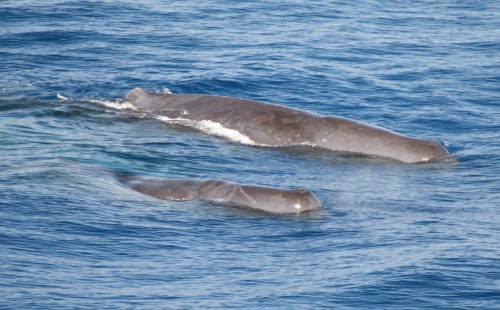
The Bureau of Ocean Energy Management (BOEM) recently awarded a contract to HDR Environmental, Operations and Construction (HDR) to support BOEM’s Passive Acoustic Monitoring (PAM) Program for the Northern Gulf of Mexico.
The world is a noisy place. As humans, we contribute to the noise levels in the ocean through a variety of activities from shipping to underwater construction. As a result, our activities have created a noisy habitat for marine animals, particularly marine mammals which rely on sound for communication and foraging. To develop ways to minimize noise impacts to marine mammals, we must first characterize ambient noise levels.
The Gulf of Mexico, a highly industrialized environment, is an especially noisy place full of shipping, oil and gas, and military activities which contribute to ambient noise levels. As we learned after the Deepwater Horizon oil spill in 2010, baseline data on ambient noise in the Gulf of Mexico are extremely limited. Small-scale PAM programs in several regions of the U.S. have effectively measured and monitored ambient and anthropogenic noise levels and marine mammal presence. However, no national, long-term program currently exists.
The objective of this program is to establish a current baseline of natural and anthropogenic noise sources and levels in the Gulf of Mexico via implementation of a 2-year PAM study using moored acoustic recorders deployed at permanent stations throughout the Gulf of Mexico. This PAM system may also include mobile recording devices (e.g., gliders) and will be able to record not only anthropogenic noises but also vocalizing marine mammals to provide critical spatial and temporal information about whales and dolphins in the Gulf of Mexico.
HDR is leading this effort for BOEM and has formed a diverse team of highly experienced acousticians and marine mammal scientists from universities and other environmental consulting companies. We are excited to be a part of the HDR Team and are currently supporting HDR’s efforts to review and synthesize published data and information about previous PAM studies on marine mammals and ambient and anthropogenic noise in the Gulf. In collaboration with HDR’s scientists, we are investigating existing methodologies for recording and analyzing noise and marine mammal sounds, including signal detection, localization, and classification of mammal vocalizations, and summarizing the previous studies and efforts to provide a comprehensive review of PAM in the Gulf.
The HDR Team will use this literature review and synthesis to identify the most appropriate field methodologies and protocols for measuring the acoustic environment in the Gulf and develop an experimental design for the 2-year PAM study. The next phase will be to implement the PAM program and begin collecting acoustic recordings.

